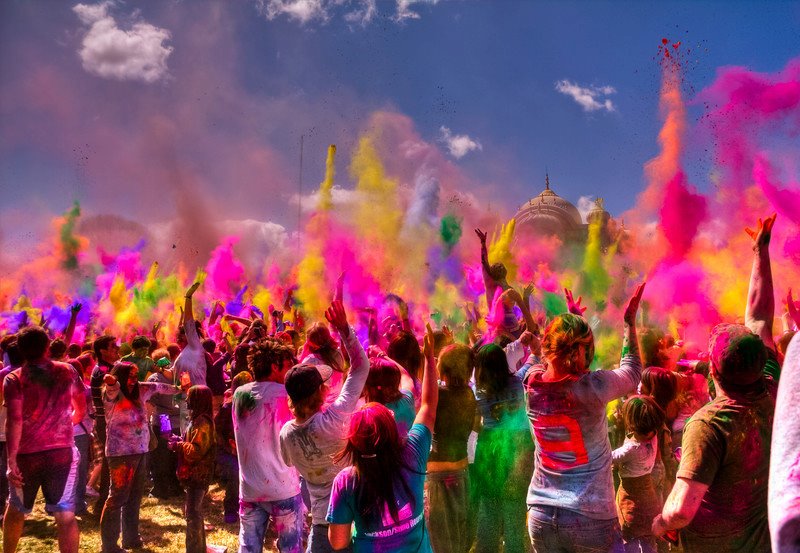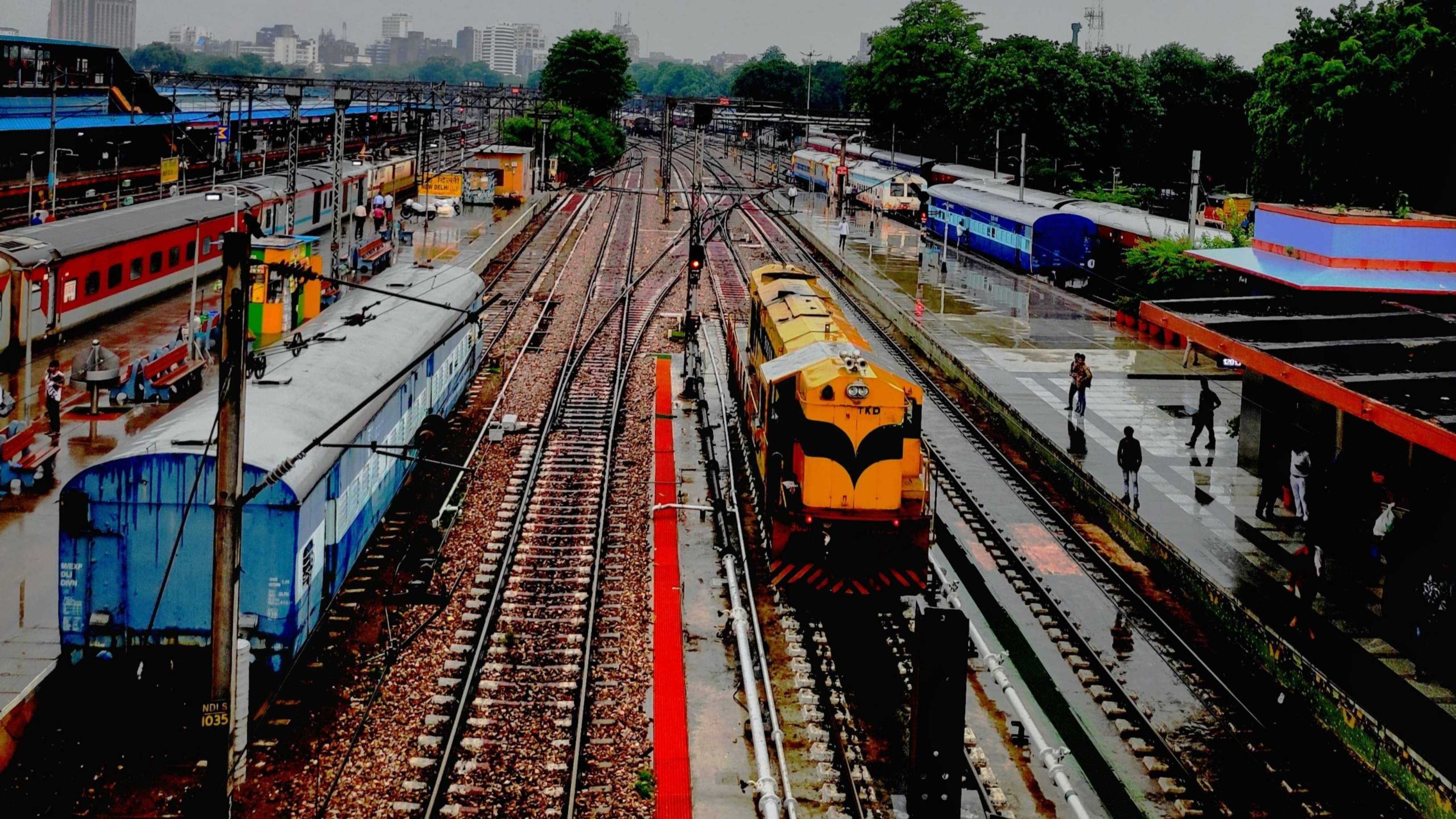Gallery
Photos from events, contest for the best costume, videos from master classes.
 |  |
 |  |
 |  |
 |  |
 |  |
 |  |
Holi is a Hindu spring festival celebrated in India and Nepal on the full-moon day of Phalguna (February–March). On this day, participants throw colored water and colored powders on one another, and the usual societal norms are set aside. Holi (IPA: ['hoːli:, hoːɭiː]) is a major Hindu festival celebrated as the Festival of Colours, Love, and Spring. [ 1 ] [ 7 ] [ 8 ] [ 9 ] It celebrates the eternal and divine love of the deities Radha and Krishna . Holi is one of the most famous festival is about to come. It is a traditional Hindu spring festival held in India. It is mainly held on the full moon day in March and celebrates the arrival of spring. Traditional Holi Celebrations in India. Holi is a two-day festival filled with devotion, fun, and colors! 1. Holika Dahan (March 13, 2025) – The Bonfire Ritual. At night, bonfires are lit to symbolize the burning away of evil. People offer coconuts, wheat grains, and jaggery to the fire. Families and friends gather to sing folk songs and The festival of colours, Holi, is the most vibrant of all Hindu festivals. It marks the end of winter in India and welcomes the spring season. On this festive day, people play with colours, meet and greet one another and create new beginnings. But do you know the real reason why Holi is celebrated? Holi, the festival of colours, is one of India’s most vibrant and joyous celebrations, marking the arrival of spring, renewal, and the triumph of good over evil. Holi, often called the "festival of colors," is a vibrant Hindu celebration that marks spring’s arrival, the triumph of good over evil, and the love between Radha and Krishna. Every spring, people across India and around the world celebrate the Hindu festival Holi, throwing colored water and powders on one another in joyous celebration. On this one day—the full-moon day of the Hindu month of Phalguna—societal rankings such as caste, gender, age, and status are eschewed in the spirit of making merry together, and In Maharashtra: The festival is celebrated with ‘Puran Poli’ sweets and community gatherings. VI. Symbolism of Colors in Holi A. Meaning behind different colors used during the festival. Colors play a vital role in Holi, each carrying its own significance: Red: Symbolizes love and passion. Yellow: Represents brightness and energy. History of Holi: The Story Behind the Festival. The origins of Holi date back to ancient Hindu mythology. The most popular story associated with Holi is that of Holika and Prahlad. The Legend of Prahlad and Holika. The story is rooted in the Bhagavata Purana and revolves around a demon king named Hiranyakashipu, who ruled with cruelty and tyranny. Also known as the festival of colors, Holi (pronounced Ho-lee) is a Hindu religious holiday that celebrates the victory of good over evil and is one of the most well-known festivals in India. The festival celebrates the feelings of love and pure joy with a chaotic countrywide colored powder fight. Holi 2025 falls on March 14th. The main Holi, one of the most colorful and joyous festivals in India, is celebrated over two days, each holding profound spiritual and cultural significance. The festival begins with Holika Dahan on the first night, a ritual symbolizing the burning away of negativity, followed by Rangwali Holi or Dhulandi, a day dedicated to celebrating the triumph of The Vibrant Festival of Holi. Holi, also known as the Festival of Colors, is one of the most joyful and widely celebrated festivals in India. Falling during Palgunam Masam, the last month of the Hindu lunar calendar, Holi signifies the arrival of spring—a time of renewal, love, and the triumph of good over evil. The Significance and Meaning of Holi Colors. The traditional Holi colors’ meaning extends beyond mere celebration. Holi Indian celebration is deeply rooted in the culture and spiritual matters. To know why is Holi celebrated with colors, you need to dive deep. Each shade used during Holi carries its own story and conveys a profound meaning. Festivals News: Holi promotes cultural unity, psychological, and physical benefits, blending ancient traditions with regional variations. Celebrations in North India That's Holi - India's most colourful festival. And it captures imaginations worldwide. But while these powder-throwing celebrations have become famous on Instagram, there's far more to this ancient celebration than pelting your mates with powdered dye. Holi celebrations in North India and Nepal are among the liveliest, as both places are deeply tied to the Hindu stories the festival honors. But Holi celebrations don’t abide by geographic borders. Holi, the Hindu festival of colors, has come to symbolize the vivid, colorful joy of Indian festivals. Holi is one of India's most vivid, colorful festivals Each color carries a meaning. Red As Holi marks the beginning of spring and the end of the winter season, it holds major significance among ancient Indian agricultural rituals and traditions. Farmers around India celebrate Holi festival by performing elaborate rituals and praying for a successful yield this season. A guide to Holi celebrations in India-Traditions, rituals and tips Holi celebrations in North India and Nepal are among the liveliest, as both places are deeply tied to the Hindu stories the festival honors. But Holi celebrations don’t abide by geographic borders.
Articles and news, personal stories, interviews with experts.
Photos from events, contest for the best costume, videos from master classes.
 |  |
 |  |
 |  |
 |  |
 |  |
 |  |